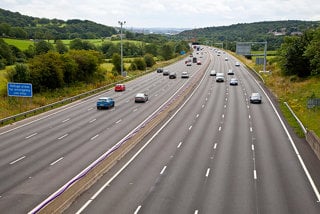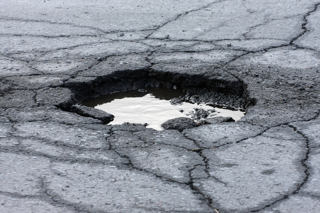Highways England has admitted it needs to up its game when it comes to communicating delays on the road network to drivers.
Traffic volumes are at their highest since records began, with 317.8 billion miles travelled on Britain’s roads last year, increasing journey times and congestion.
However, company car and van drivers caught up in delays are often left in the dark as to what has caused the problem and how long it will take to be resolved.
“We need accurate information on the network to help fleet operators make informed decisions,” said Malcolm Bingham, head of road network management policy at the Freight Transport Association (FTA).
The FTA says that 52% of its members are reporting lengthening journey times.
That’s not surprising, considering traffic volumes are now 1.1% above the pre-recession peak recorded in the 12 months to the end of September 2007, according to provisional data released by the Department for Transport (DfT).
Van mileage has hit a new high of 47.7bn miles – a 6% rise on the previous year – while car mileage hit 248.6bn vehicle miles, slightly above the previous peak of 248.3bn for the year ending June 2007.
HGV traffic increased on the previous year by 1.1%, but remained below the peak level in the year ending June 2008.
Stephen Dauncey, chief financial officer at Highways England, told delegates at a recent Westminster Energy, Environment and Transport Forum that it must improve customer service.
He said: “Our digital capability is way behind any other service business. These are new skills we’ve never had to do but now, with customer expectations, we’ve got to do so much more.”
The problem, says Dauncey, is that Highways England’s internal processes for responding to an incident are focused on managing it, rather than managing the impact on customers. “It’s something we’ve got to learn from,” he said.
“We also need to provide real-time information for customers. We need to innovate our own thinking and our own delivery.
“We know the journey experience is not good enough.”
An improving economy – UK GDP grew by 2.2% last year – has certainly fuelled rising traffic volumes, but lower pump prices have also contributed to the increase.
The price of diesel at the end of last year was 18.5 pence per litre cheaper than it was at the start of 2015, while petrol fell by 16.3ppl in the year.
“Government figures show there has been an increase in traffic in line with a rise in the country’s business output,” said David Bizley, chief engineer at the RAC.
“Slower average speeds appear to be the downside for motorists.
“The Government is investing in major roads and has ring-fenced tax to continue the investment beyond 2020, but the evidence suggests the condition of local roads is still in need of extra investment.”
Traffic increased by 5.2% on minor rural roads, the biggest percentage increase of any road type, to 45.8bn vehicle miles. On minor urban roads it grew by 1% to 65.4bn.
Traffic on motorways and rural roads, however, was higher than it has ever been. Motorway traffic increased by 2.4% from the previous year, to 65.8bn vehicle miles and traffic on rural roads rose by 3.6% to 137.3bn.
‘A’ road traffic also showed an increase – up 1.8% on the previous year. This was driven by traffic on rural ‘A’ roads, which grew by 2.8% to 91.5bn vehicle miles, while traffic on urban ‘A’ roads remained at the same level at 49.3bn.
Steve Gooding, director of the RAC Foundation, said: “There is more of the same on the horizon with the Department for Transport predicting further traffic growth on motorways of between 30% and 60% over the next 25 years depending on what happens to fuel prices and Britain plc.”






















x - 07/03/2016 11:53
Completely agree. From junction 19 of the M1 yesterday I was told the A50 west was closed (j24a). It didn't say that it was only the very first section and I could easily find a redirection. It looked as if the whole road was closed. Diversions are always so questionable and badly signposted that I never know to trust them.